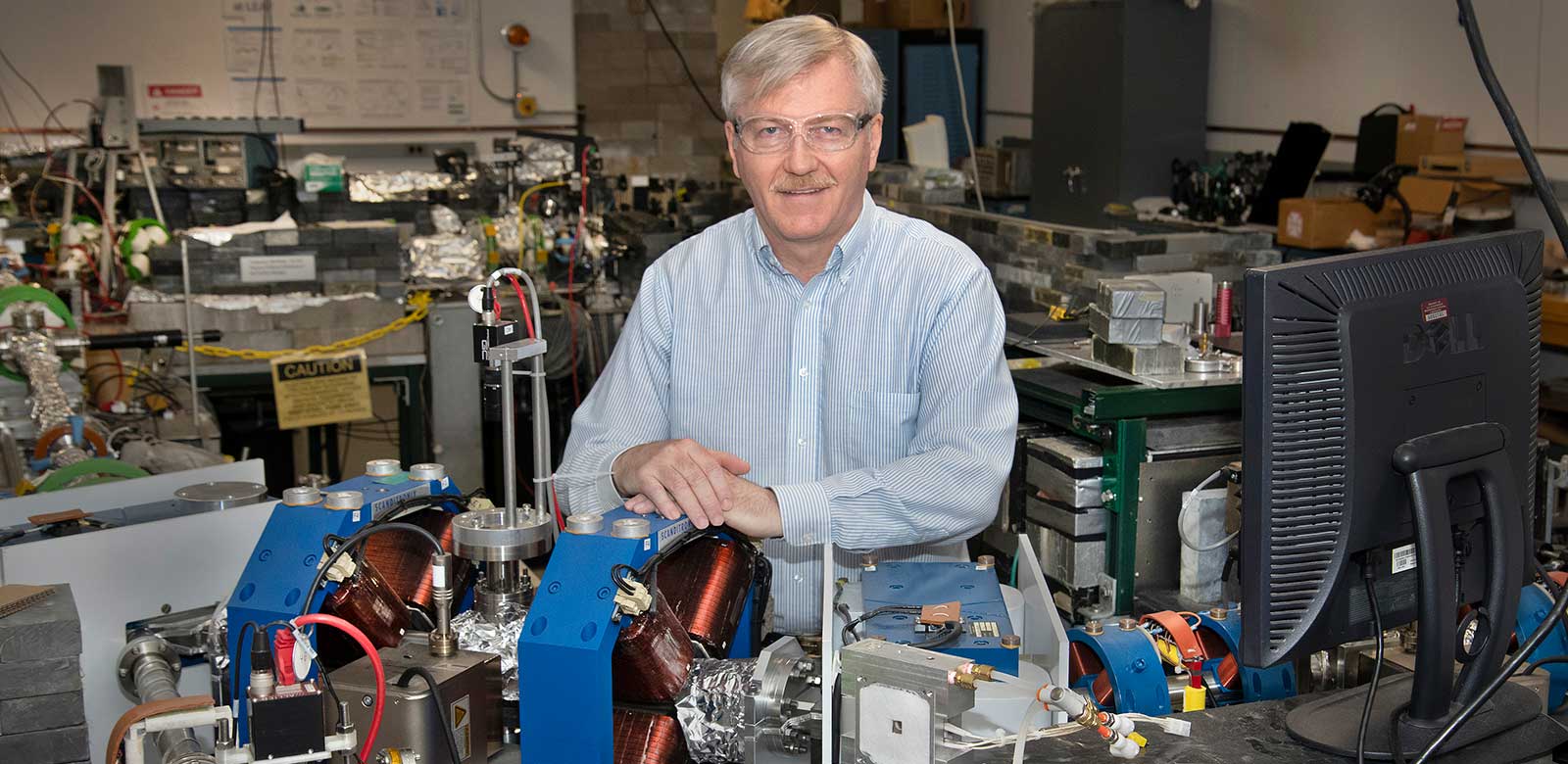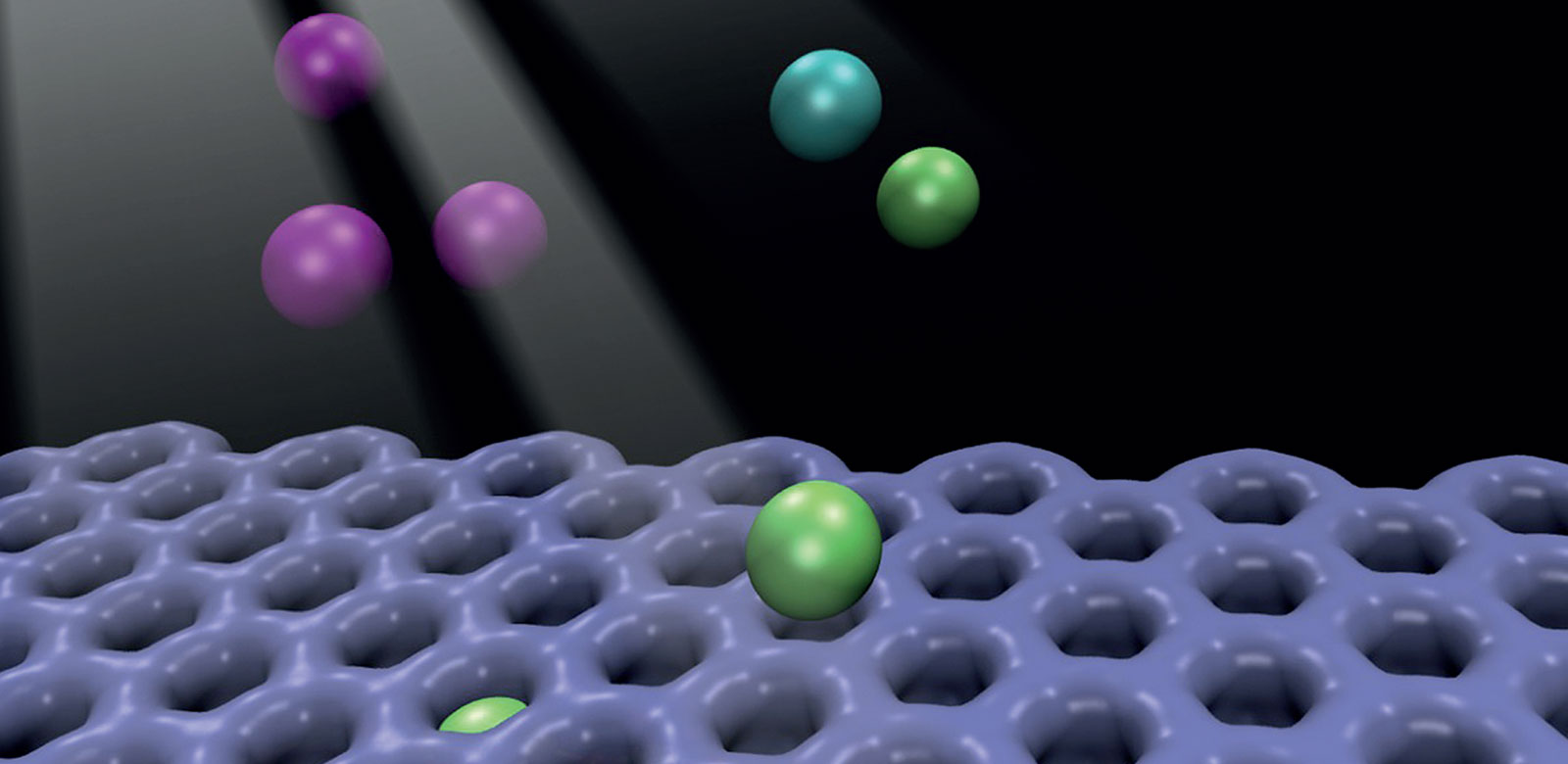
Advances in Nuclear Energy
Brookhaven Lab has a long history in nuclear science and technology. Recognizing the important role nuclear energy plays in providing reliable, carbon-free electricity, our scientists are committed to research that will continue to advance the field.
Molten salt reactors for improving nuclear energy safety
Brookhaven Lab has leading nuclear material science capabilities to support the existing fleet of power reactors and new reactor concepts. These include reactors where molten salts—materials made of positively and negatively charged ions in a liquid state under elevated temperatures—act as coolants and/or solvents for nuclear fuel. Molten salts are attractive because they can operate at higher, more efficient temperatures while still at ambient pressure, which brings safety benefits. The goal of Brookhaven’s “Molten Salts in Extreme Environments” Energy Frontier Research Center is to provide the scientific foundation for the practical implementation of these reactors by understanding the chemical and collective behavior of molten salts and the nuclear materials dissolved in them, as well as how these materials affect the metal vessels and piping of reactors.

Brookhaven chemist James Wishart, shown here at the Laser Electron Accelerator Facility, is leading the effort to understand molten salt bulk and interfacial chemistry underpinning molten salt nuclear reactor technology.
Exploring nuclear technologies for our energy future
Brookhaven scientists conduct research related to nuclear reactors and accelerator-driven systems to support the missions of the Department of Energy, the Nuclear Regulatory Commission, and other national and international organizations. Our research includes studies of nuclear reactor design and safety, performing reliability and risk assessments of commercial reactors, developing advanced modeling techniques for reactor simulation and energy systems, characterizing nuclear fuel cycles, exploring ways to enhance proliferation resistance and physical protection of nuclear energy systems, and characterizing materials for performance in extreme environments.
Gas-trapping "nanocages" for nuclear power production, waste remediation
Noble gases—such as radioactive krypton (Kr) and xenon (Xe) generated by nuclear power plants—are hard to trap because they condense at temperatures far below freezing. Brookhaven Lab and startup Forge Nano are partnering on a project to develop porous nanoscale materials (“nanocages”) that can trap and separate atoms of krypton at room temperature. These gases can decrease the amount of energy extracted from nuclear fuel by increasing pressure in the fuel rod, reducing fuel rod lifetime. Capturing and removing Xe and Kr could improve the energy-generation efficiency of nuclear reactors and reduce radioactive waste.

An illustration of individual atoms of three different noble gases—argon, krypton, and xenon—getting trapped in a 2-D array of nanosized "cages." These porous frameworks have a hexagonal prism shape and are made of silicon and oxygen. Brookhaven Lab and industry partner Forge Nano will advance this technology for nuclear energy applications.




